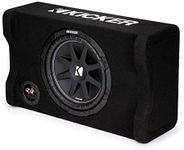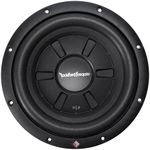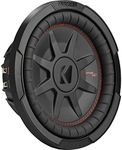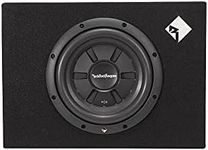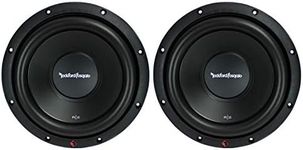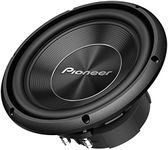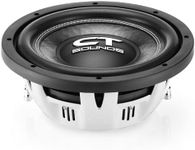Buying Guide for the Best Shallow 10 Subwoofer
Choosing a shallow 10-inch subwoofer is all about finding the right balance between size, power, and sound quality for your specific needs. Shallow subwoofers are designed to fit in tight spaces, making them ideal for vehicles with limited room or for custom installations where space is at a premium. When shopping for one, it's important to understand the key specifications that affect performance and compatibility, so you can select a subwoofer that delivers the bass you want without compromising on fit or sound.Mounting DepthMounting depth refers to how deep the subwoofer is from the front of the speaker to the back. This is crucial for shallow subwoofers because they are specifically designed to fit in places where space is limited, such as under seats or in slim enclosures. Mounting depths can range from very shallow (around 2-3 inches) to slightly deeper (up to 5 inches). If you have very limited space, look for the shallowest options, but always measure your available space before buying. If you have a bit more room, you might get slightly better performance from a subwoofer with a bit more depth.
Power Handling (RMS and Peak)Power handling tells you how much power the subwoofer can handle from your amplifier, usually given as RMS (continuous power) and peak (maximum short burst). RMS is the more important number for everyday use. Lower RMS ratings (100-200 watts) are suitable for casual listening and smaller systems, while higher RMS ratings (300-500 watts or more) are better for those who want louder, deeper bass. Match the subwoofer’s RMS rating to your amplifier’s output for the best results, and consider your listening habits—if you like your music loud and bass-heavy, go for a higher power handling.
SensitivitySensitivity measures how efficiently a subwoofer converts power into sound, usually given in decibels (dB). Higher sensitivity (above 88 dB) means the subwoofer will play louder with less power, which is helpful if you have a lower-powered amplifier. Lower sensitivity (below 85 dB) may require more power to achieve the same volume. If you want to maximize output with limited power, look for a subwoofer with higher sensitivity.
ImpedanceImpedance, measured in ohms, affects how the subwoofer interacts with your amplifier. Most shallow 10-inch subwoofers come in 2-ohm or 4-ohm versions. Lower impedance (2 ohms) allows more power from most amplifiers, which can mean more bass, but your amp must be compatible. Higher impedance (4 ohms) is more common and works with most systems. Check your amplifier’s specs and choose a subwoofer with matching impedance for safe and optimal performance.
Enclosure CompatibilitySome shallow subwoofers are designed for specific types of enclosures, such as sealed or ported boxes. Sealed enclosures provide tight, accurate bass and are usually more compact, while ported enclosures offer louder, boomier bass but require more space. If you want precise, controlled bass and have very limited space, go for a subwoofer that works well in a sealed enclosure. If you prefer louder bass and have a bit more room, consider one that’s compatible with ported enclosures.
Frequency ResponseFrequency response tells you the range of bass notes the subwoofer can produce, usually given as a range (for example, 25-200 Hz). A lower starting number means the subwoofer can play deeper bass. If you want to feel the lowest rumbles in your music or movies, look for a subwoofer with a lower frequency response. However, in real-world use, the difference may be subtle, especially in small or less-than-ideal spaces.
